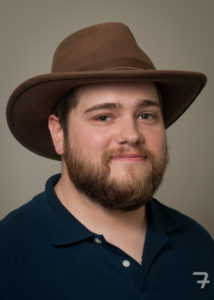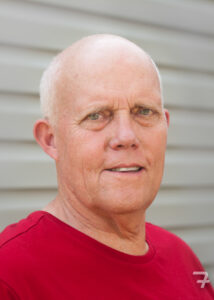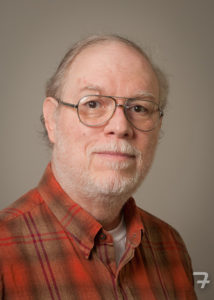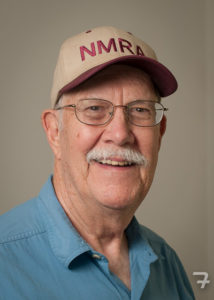Minutes submitted by Clerk Harvey Heyser
Because of the COVID-19 pandemic, the SMD Mini-Con of April 18 and the regular meeting of May 17 had to be cancelled.
[A summary of actions taken in preparation for the 9-13-20 meeting is appropriate here.
Through the late spring and summer, NMRA National developed guidelines for remote/distance events. Those guidelines were shared with all NMRA groups through the Regions. MER Director Bob Morningstar passed information along to the SMD.
The Officers and Advisory Committee held a Planning Meeting for Remote/Distanced Meetings by an 8-28-20 test Zoom call. Minutes of that meeting were made available to members by e-mail on 9-7-20.
During the Planning Meeting, the Officers and Advisory Committee reviewed the SMD By-Laws, which include the following:
Article XII-1: “Membership meetings will be held at such times and places as may be determined by the officers.” Note that the Officers are charged with determining the places of meetings. Based on advice from the NMRA National, the Zoom platform can be considered a place. Also note that the By-Laws do not specifically mandate face-to-face elections. Consequently, the Officers (with Advisory Committee agreement) decided to hold the election at a remote regular membership meeting normally scheduled for the second Sunday of September (9-13-20).
Article XII-4: “Proxy voting is permitted on any issue where advance notice is sent to all members, such as referendums, changes in the Bylaws, or election of officers. Proxies will be sent to the Clerk-Paymaster, who will vote them as directed.”
Article XII-5: “At any membership meeting, fifteen members (in person or by proxy) will constitute a quorum for purposes of voting on items announced in advance. Fifteen members (in person) will constitute a quorum for other purposes.”
Article XIII-4: “The names of the candidates for office will be communicated to the membership at least fifteen days before the election.”
Article XIII-5: “If contested, the election will be conducted by the Nominating Committee Chair at the annual meeting via secret ballot. Ballots will be counted and results announced before the close of the meeting. Positions will be filled by a simple plurality of votes.”
Members were notified of the election and candidates by e-mail on 9-29-20. As there was only one nominee for each position, the election was not contested. Consequently, the election could be conducted by the out-going Superintendent.
In preparation for the remote regular meeting and at the suggestion of MER Director Bob Morningstar, Zoom practice sessions were held on 9-11-20 and 9-12-20 in order to familiarize members with logging into Zoom meetings. Members were able to participate in those sessions by various electronic devices and by land line telephones.]
Division members met remotely on the internet using the Zoom platform. After some socializing, out-going Superintendent Alex Polimeni called the business meeting to order.
20.9-1 Paymaster’s Report: Paymaster Ray Price reported that the Division has $3808.09 in its bank account. That balance took into consideration the Division’s purchase of a Zoom license, expenses related to the fall Wheel Report, and receipt of 2 checks from the MER. The Paymaster reported that he did not purchase the $150 gift certificate raffle prize for the cancelled Mini-Con.
20.9-2 Clerk’s Report (Meeting Minutes): Clerk Harvey Heyser summarized the draft minutes for the March meeting (previously distributed by e-mail). Don Florwick made the following motion (second by Bob Johnson):
Motion: That the draft Minutes for the January 2020 meeting be approved as submitted. The motion passed unanimously.
Minutes of the Planning Meeting held by the Officers and Advisory Committee (8-28-20) had been made available previously for members to read via e-mail. There was agreement that no further discussion was necessary at the September membership meeting.
Old Business: Old business will be discussed at the October 2020 meeting.
New Business:
20.9-3 Election of officers: Out-going Superintendent Polimeni stated that this remote meeting was being held in a time of emergency. He reviewed the provisions of the by-laws and the decisions made by the Officers and Advisory Committee. He placed the slate of nominees for elected officer positions before the membership for a vote: Superintendent – Jerry Skeim, Clerk – Harvey Heyser, and Paymaster – Ray Price. A roll call vote was taken. For the purposes of establishing that a quorum was present the following names are numbered and in the order of the roll call.
Voting for the slate of nominees:
1) Ron Polimeni, 2) Jay Beckham, 3) Bill Wilson, 4) Dave Thalman, 5) Ray Price, 6) Jerry Skeim, 7) John Madden, 8) Bob Johnson, 9) Jack Fritz 10) Andy Arnold, 11) Don Florwick, 12) Gary Nastasi 13) Bill Martz, 14) Andrew Roberts,15) Harvey Heyser, 16) Rich Nemchik, 17) Alex Polimeni, 18) proxy Tom Fedor, and 19) proxy Richard Benjamin. (The 2 proxy votes were cast by the Clerk.)
Voting against the slate as presented – no one.
Abstaining – none of the SMD members present – (Meeting attendees who live in non-SMD counties did not vote.)
Bob Johnson made the following motion (second by Ron Polimeni):
Motion: That the slate of nominees be adopted unanimously. The motion passed unanimously.
20.9-4 Zoom account: Alex Polimeni will administer the SMD account for now. The page can be used for informal (non-meeting) activities (hanging out, etc.). Experience with the practice Zoom sessions indicated ways to share content (use of the screen share capability on Zoom), ask questions, get help with problems, give layout tours, and hold other activities of interest to the membership.
20.9-5 Revisions to the By-Laws: Alex Polimeni pointed out the need for provisions related to “times of emergency” and suggested that matter be taken up during the course of periodic review of the by-laws.
20.9-6 Members praised outgoing Superintendent Polimeni for the job he did during his term of office.
20.9-7 Division Facebook page: Members were encouraged to use the page for informal contacts.
Adjournment: The Superintendent accepted a motion to adjourn. The next meeting will be held remotely in October. Members will be notified by e-mail.
Following the meeting, informal discussion among members continued.

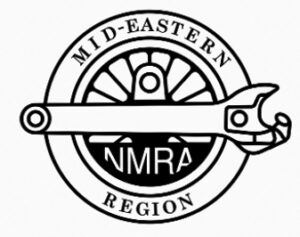 My fellow MER members:
My fellow MER members: